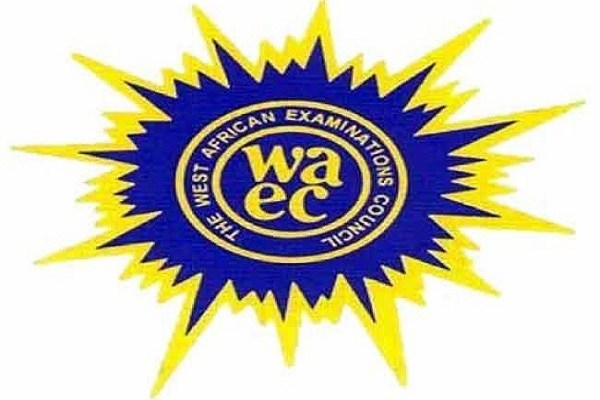Waec

Animal-Obj
1BDCCBCADAA
11CDBCBABBAA
21BBABDDBCBC
31CCACDDCADC
(5a)
(PICK ANY SIX)
(i)Implement strict biosecurity protocols to prevent spread of diseases.
(ii)Implement a vaccination program
(iii)Provide a balanced and adequate diet to support the immune system of the sheep.
(iv)Implement effective parasite control measures
(v)Provide clean and well-ventilated housing facilities for the sheep.
(vi)Regularly monitor the health status of the flock and observe for any abnormal behavior.
(vii)Stay updated with the latest research and best practices in sheep health management.
(5b)
(PICK ANY THREE)
(i)Ensure that the feed provided to the sheep is of good quality, fresh, and nutritionally balanced.
(ii)Enhance the palatability of the feed by adding flavors
(iii)Pay attention to how the feed is presented to the sheep
(iv)Implement a regular feeding schedule and maintain consistency in feeding times.
(v)Provide enough feeding space to minimize competition among the sheep.
(vi)Regularly monitor the health of the flock and address any underlying health issues promptly.
(5ci)
Introduction : It involves bringing in animals or germplasm (semen, embryos, or genetic material) from outside sources that possess desirable traits or genetic characteristics.
(5cii)
Selection: This refer to the process of choosing animals with desirable traits as parents for the next generation.
(5ciii)
Breeding : This refer to the various techniques and approaches used to mate animals with the goal of improving specific traits or genetic characteristics within a population.
(5d)
(PICK ANY FIVE)
(i)Animal improvement aims to balance the need for genetic improvement with the preservation of genetic diversity within populations.
(ii)Enhancing reproductive performance is a critical aim in animal improvement
(iii)To enhance the resistance and resilience of animals to diseases, parasites, and other health issues.
(iv) Animal improvement helps to enhance the productivity of animals.
(v) Animal improvement aims to achieve genetic progress over generations.
(vi)Animal improvement programs helps to improved animal welfare, ease of management, and safety.
(vii)Animal improvement programs helps to ensure the animals can thrive in their respective production environments.
(2ai)
Malnutrition in animal husbandry refers to the condition in which an animal does not receive adequate amounts of required nutrients such as protein vitamins and minerals necessary for proper growth development and maintenance of bodily functions.
(2aii)
(i) Calcium
(ii) Methionine
(iii) Lysine
(2aiii)
(i) Maize: Provides energy in the form of carbohydrates needed for growth and maintenance of body functions.
(ii) Fishmeal: Rich source of high-quality protein omega-3 fatty acids and essential micronutrients like vitamins and minerals that aid in growth and maintenance of feather quality immune system and other functions.
(iii) Groundnut cake: Contains protein and essential amino acids that are important for poultry growth and development.
(iv) Oyster shell: Provides calcium required for proper bone development and eggshell formation.
(2b)
[PICK ANY TWO]
(i) To monitor and evaluate bird performance: Keeping records of feed consumption weight gain and egg production helps farmers to monitor bird performance and detect any issues such as sickness or poor growth rate.
(ii) To manage feed and medication usage: Records of feed and medication consumption help farmers to manage their stock and plan for future usage.
(iii) To keep track of expenses and income: Keeping financial records is essential for budgeting and making informed business decisions.
(iii) To comply with regulatory requirements: Some poultry farming activities require keeping records to comply with regulations and standards.
(iv) To plan for future production: Records help farmers to forecast future production and plan for necessary adjustments to optimize production.
(v) To improve efficiency: Analyzing records of feed conversion cost of production and bird performance helps farmers to identify areas where efficiency can be improved and implement necessary changes.
(2c)
[PICK ANY FOUR]
(i) Ensure proper drainage: Liver flukes require damp environments to complete their life cycle so proper drainage will help to reduce their population.
(ii) Avoid overgrazing: Overgrazing of pasture by livestock can damage the grass and create ideal conditions for liver fluke infestation.
(iii) De-worm regularly: De-worming of livestock helps to prevent liver fluke infestation by killing the immature stages of the parasite.
(iv) Rotate pasture: Regularly rotating livestock to different pastures helps to break the life cycle of liver flukes by interrupting their access to required habitat.
(v) Boil drinking water: Boiling water for drinking by livestock prevents them from ingesting snails which can harbor infective stages of liver flukes.
(vi) Use snail control measures: Controlling snail populations in water sources and pastures is an effective way of preventing liver fluke infestation in livestock.
(4ai)
Parasites are organisms that live in or on a host organism, deriving nutrients from the host while potentially causing harm
(4aii)
pests refer to organisms that can cause harm, nuisance, or economic damage to livestock or the production environment.
(4b)
(PICK ANY THREE)
(i)Sheep Keds (Melophagus ovinus)
(ii)Sheep Ticks (Ixodes ricinus and Dermacentor spp.)
(iii)Sheep Lice (Bovicola ovis and Damalinia ovis)
(iv)Sheep Scab Mite (Psoroptes ovis)
(v)Blowflies (Lucilia spp. and Calliphora spp.)
(4bii)
(PICK ANY THREE)
(i)Sheep Blowflies (Lucilia spp and Calliphora spp)
(ii)Sheep Keds (Melophagus ovinus)
(iii)Sheep Ticks (Ixodes ricinus and Dermacentor spp.)
(iv)Culicoides midges (Bluetongue and other diseases)
(v)Sheep Mites (Chorioptes bovis and Psoroptes ovis)
(4c)
(PICK ANY FOUR)
(i)Pests can cause skin irritation, itching, and discomfort in cattle.
(ii)Pests can cause significant stress and irritation to cattle
(iii)Pests can act as vectors for various diseases, transmitting pathogens to cattle.
(iv)Pests can cause significant stress to cattle, leading to behavioral changes
(v)Blood-feeding pests, such as certain species of flies and ticks, can cause blood loss in cattle.
(vi)Some pests, like rodents, can cause structural damage to cattle housing facilities, feed storage areas, or equipment.
(4d)
(PICK ANY SIX)
(i)Changes in Eating and Drinking Patterns(e.g Decreased Appetite)
(ii)Altered Stool Appearance(e.g Diarrhea)
(iii)Weight Loss or Poor Body conditions
(iv)Changes in Urination( eg urine decoloration )
(v)Respiratory Symptoms(e.g sneezing and Nasal discharge)
(vi)Behavioral Changes(e.g Lethargy and Hiding or Isolation)
(vii)Changes in Fur or Skin(e.g Rough or Dull Coat)
(viii)Eye or Ear Abnormalities( e.g Redness or Swelling)
(1ai)
[PICK ANY FIVE]
(i) To extend its shelf life
(ii) To prevent spoilage and bacterial growth
(iii) To maintain its nutritional content and quality
(iv) To improve its flavor and texture
(v) To facilitate storage and transportation
(vi) To increase availability and accessibility in areas with limited access to fresh meat
(vii) To reduce waste and save money
(viii) To meet specific cultural or religious dietary restrictions
(1aii)
[PICK ANY FIVE]
(i) Ham
(ii) Sausage
(iii) Bacon
(iv) Hot dogs
(v) Deli meats
(vi) Jerky
(vii) Pepperoni
(viii) Corned beef
(1b)
[PICK ANY FOUR]
(i) They are smaller in size compared to commercial breeds.
(ii) They have a more intense flavor and texture.
(iii) They are more resistant to diseases and adverse environmental conditions.
(iv) They are able to forage for their own food.
(v) They are usually raised in free-range systems.
(vi) They have a longer life span than commercial breeds.
(1ci)
[PICK ANY THREE]
(i) Artificial vagina
(ii) Electro-ejaculation
(iii) Massage method
(iv) Manual collection
(v) Transrectal massage
(vi) Epididymal or testicular sperm aspiration
(1cii)
(i) Ensure that the equipment is cleaned and sterilized properly before use.
(ii) Use only high-quality semen from healthy donors.
(iii) Follow proper hygiene protocols to minimize the risk of infection.
Completed!
RECOMMENDED TOPICS
- JAMB 2025 UTME/DE registration document – step-by-step on how to apply for UTME and DE

- JAMB postpones 2025 UTME Registration to February 3rd

- JAMB Officially Announces 2025 UTME Registration, Exam, Mock Dates, Cost and Important Details

- The official reading novel for Jamb 2025 is Lekki Headmaster

- Subjects for Computer Science in JAMB for Guaranteed Success


